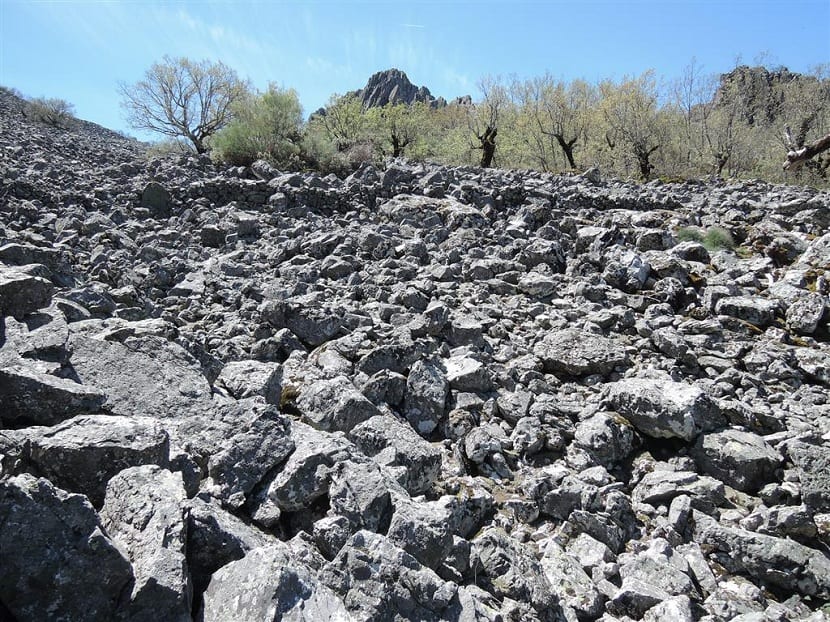
In geology we can see different formations that will be due to some geological processes. Today we are going to talk about what a scree. It is an accumulation of debris located at the foot of the mountainsides. We can also find them in certain plains.
In this article we are going to talk about the characteristics of a scree and how it is formed.
What is a scree
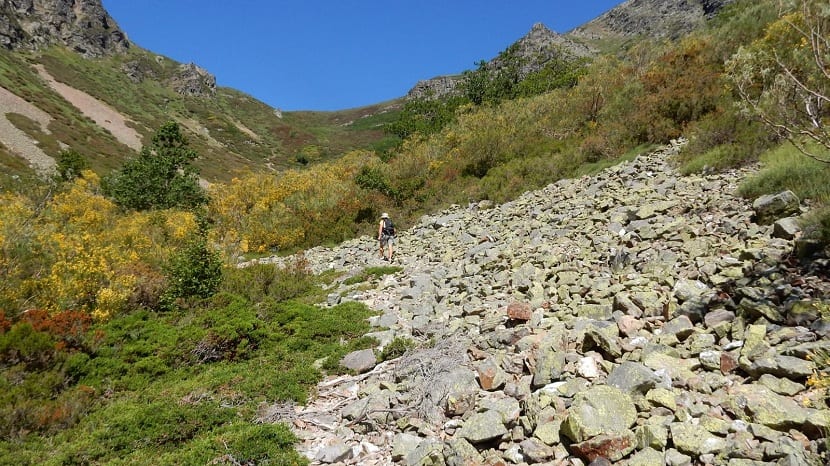
It is an accumulation of debris, that is, small rocks that have been detached from the top of a mountain. The formation of the scree is due to the weathering of the mountain ledges. Weathering can occur due to excess wind, sudden changes in temperature, freezing and thawing, and changes in pressures. With the passage of time the rocks are cracking and deforming, in such a way that they end up detaching and falling down the slope.
The accumulation of small rocks that are fragmented by the weathering process is what we call scree. Scots can be found commonly in mountainous areas. When temperatures in a mountainous area continually oscillate below zero (this happens more frequently during winter), the small raindrops that accumulate in the diets of rocks undergo a freezing process. Ice has a greater volume than liquid water, so it causes rock diets to increase in size. Obviously, this process takes years and years.
With the passage of time and the action of gelifraction, the fractures of the rocks become larger until they cause the rock to be ingested in small pieces with the simple fact of the action of other meteorological agents such as changes in temperature. Between day and night.
These stony areas are usually mobile. There is hardly any soil where they can stabilize, so they tend to move and continue to live in smaller rocky fragments. Normally, we can find the scree in areas where the thermal amplitude is quite high, great height and the flora usually have characteristics such as long roots, closer to the surface or succulent leaves.
How a scree is formed
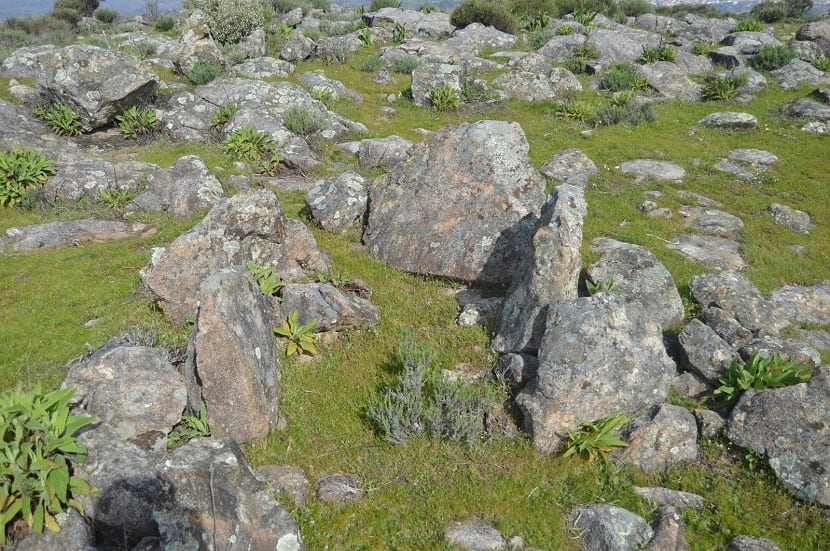
The process by which a scree forms is by weathering. Weathering is a process by which rocks decompose and disintegrate due to both physical, chemical and atmospheric agents. Although to a lesser extent, biological agents also play a role.
The rocks that are affected by weathering are found on or near the earth's surface. These rocks are decomposing into various pieces and dissolve forming new minerals. It is erosion that helps displace and transport the fragmented rocks. The weathering process is what facilitates the action of erosion in a place.
Types of weathering
Physical weathering
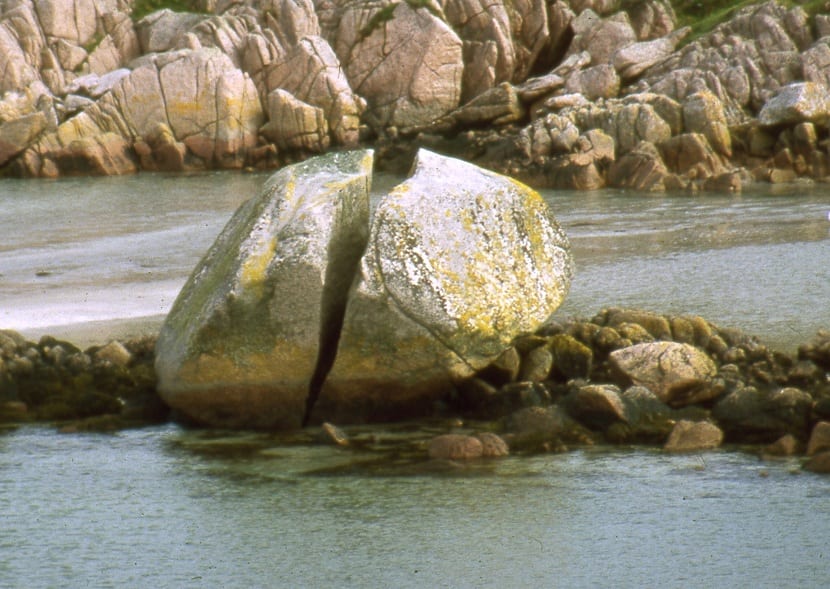
There are several types of weathering and each one acts in a different way. On the one hand, physical weathering is the cause of the breakdown of the rock. However, this break does not alter the chemical or mineralogical composition of the rock. The rock simply disintegrates and smaller rocks are formed. As erosion weighs less, it acts with greater force and a greater number of particles can be transported. The physical properties will be modifying, but the chemical ones remain. This physical weathering will be caused by some environmental agents such as the action of water, changes in temperature, salinity, among others.
This physical weathering does not have to happen on the surface. It can occur by decompression produced by those rocks that have been formed at great depth and that have been rising to the surface. These pressure changes are what produce the dilation of the rock and, therefore, the formation of which cracks.
Another form of physical weathering is known as thermoclasty. These are cracks that form on the surface of rocks as a result of changes in temperature. During the day the rock heats up and expands and during the night it cools and contracts. With the passage of time, the rock eventually breaks. This weathering is one of the most frequent, especially in areas of great thermal amplitude such as deserts. Granite rocks can also suffer from thermoclastic weathering. These rocks receive solar radiation in the surface layers of granite, so the temperature rises and expands only a few centimeters from its own surface. As they cool, they separate from the rest of the rock, which is why they are called exfoliation in balls.
Haloclasty is another type of physical weathering that occurs due to the effects of installed salt at the poles of the rock and its subsequent crystallization. When the rock crystallizes its volume increases. In this way, the pressure inside the rocks increases, as occurs with gelling, and causes small fragments to break. The rocks that have suffered this type of physical weathering have an angled shape and are smaller in size, so the erosion acts in a stronger way.
Chemical and biological weathering
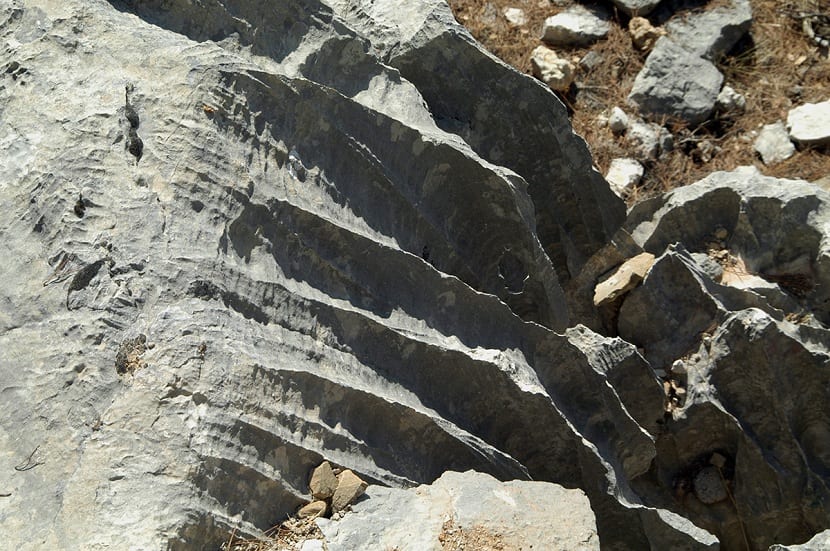
Chemical weathering is what occurs when rock changes its chemical composition by an external agent. For example, limestone rocks are the most affected by the action of rain. Rain has carbon dioxide that, when entering through the limestone rock, forms what is known as calcite. The calcium carbonate contained in the limestone rock mixes with carbon dioxide to form calcite. Thanks to this chemical reaction they will be formations like stalactites and stalagmites.
Lastly, we talk about biological weathering. It is about the impact generated by the action of the organisms that live around the rock. For example worms, larvae, insects, etc. The action of these organisms cracks the rock over time.
For any of these reasons, a scree can form. I hope that with this information you can learn more about the field.